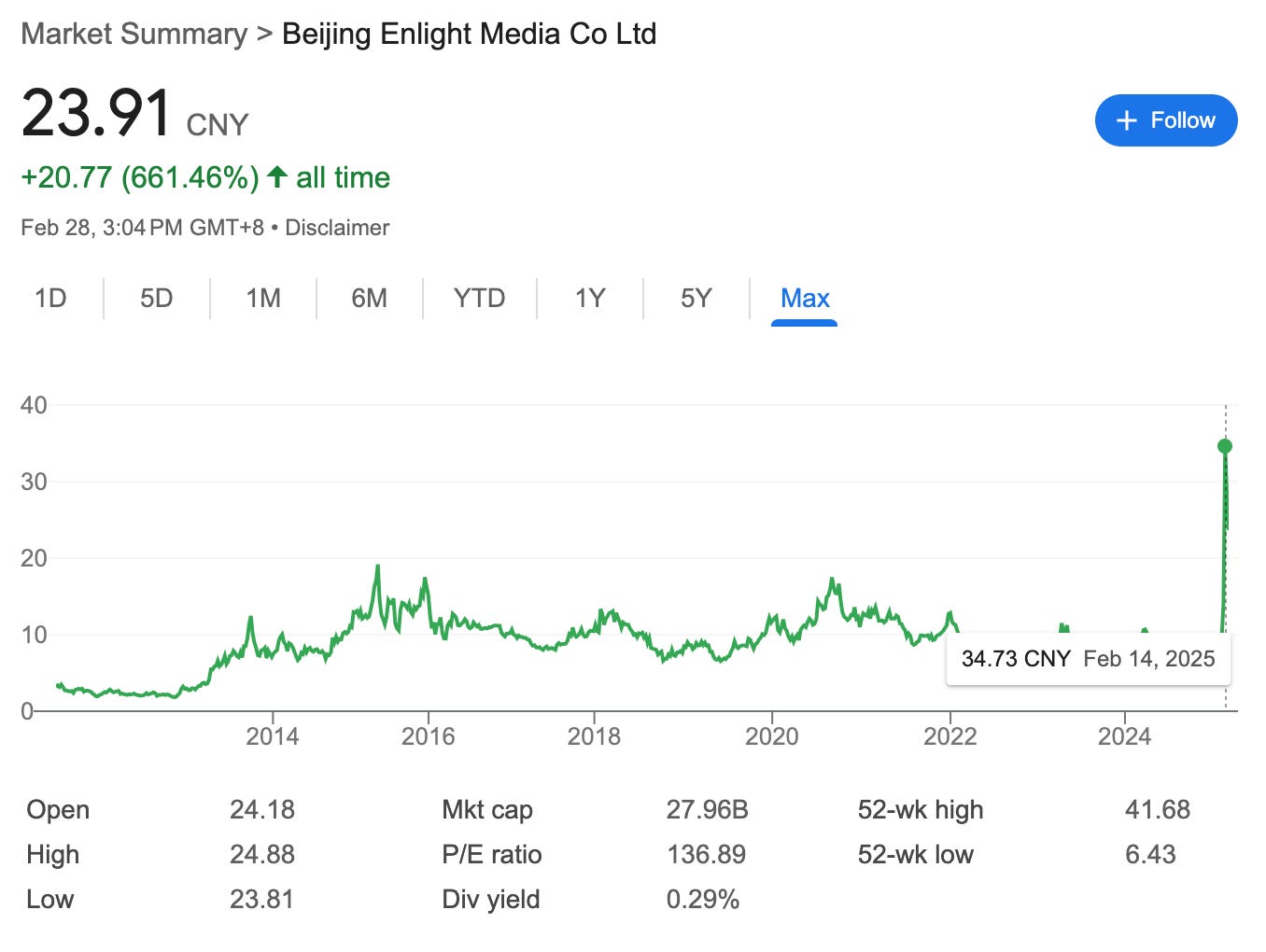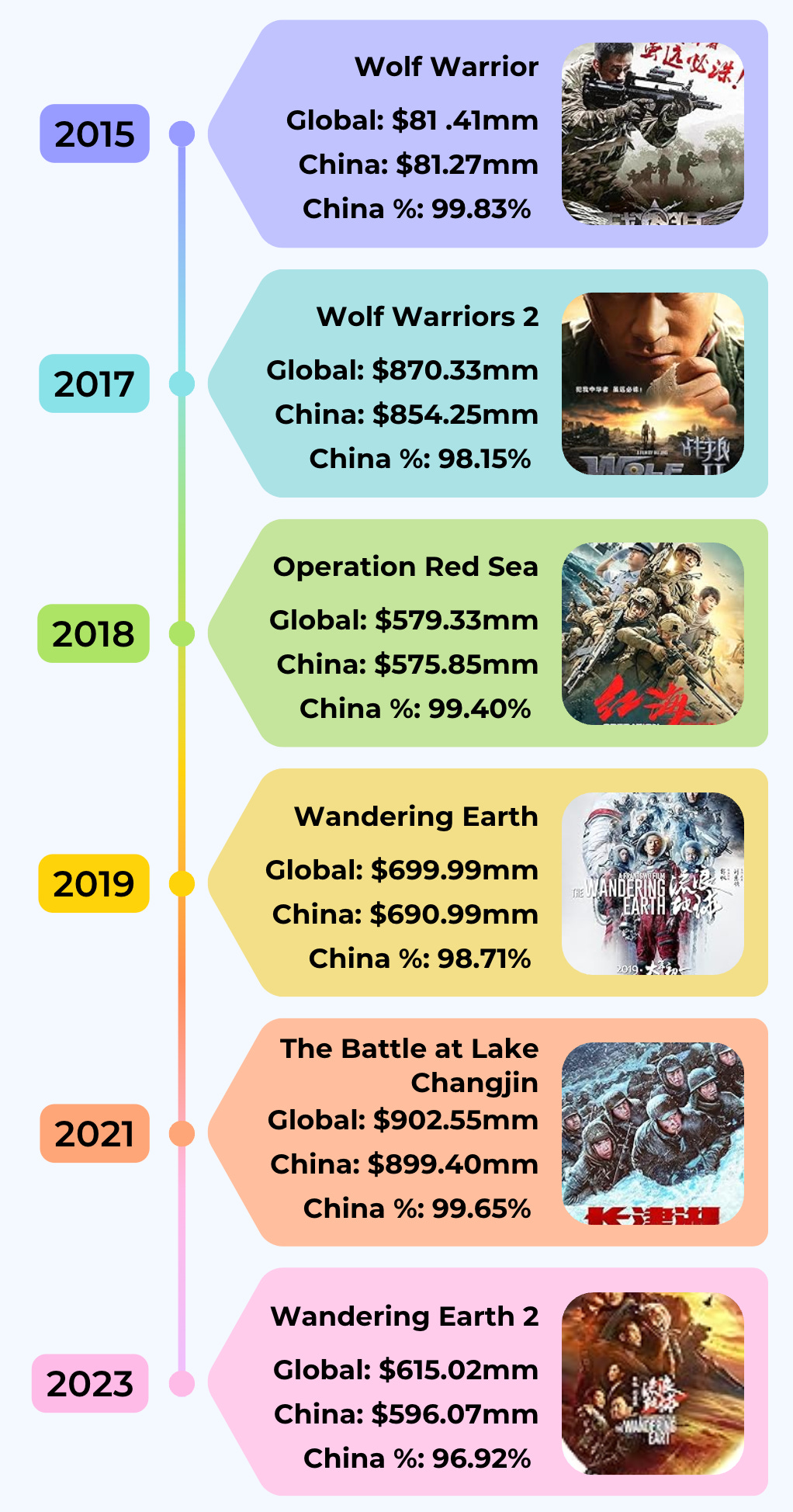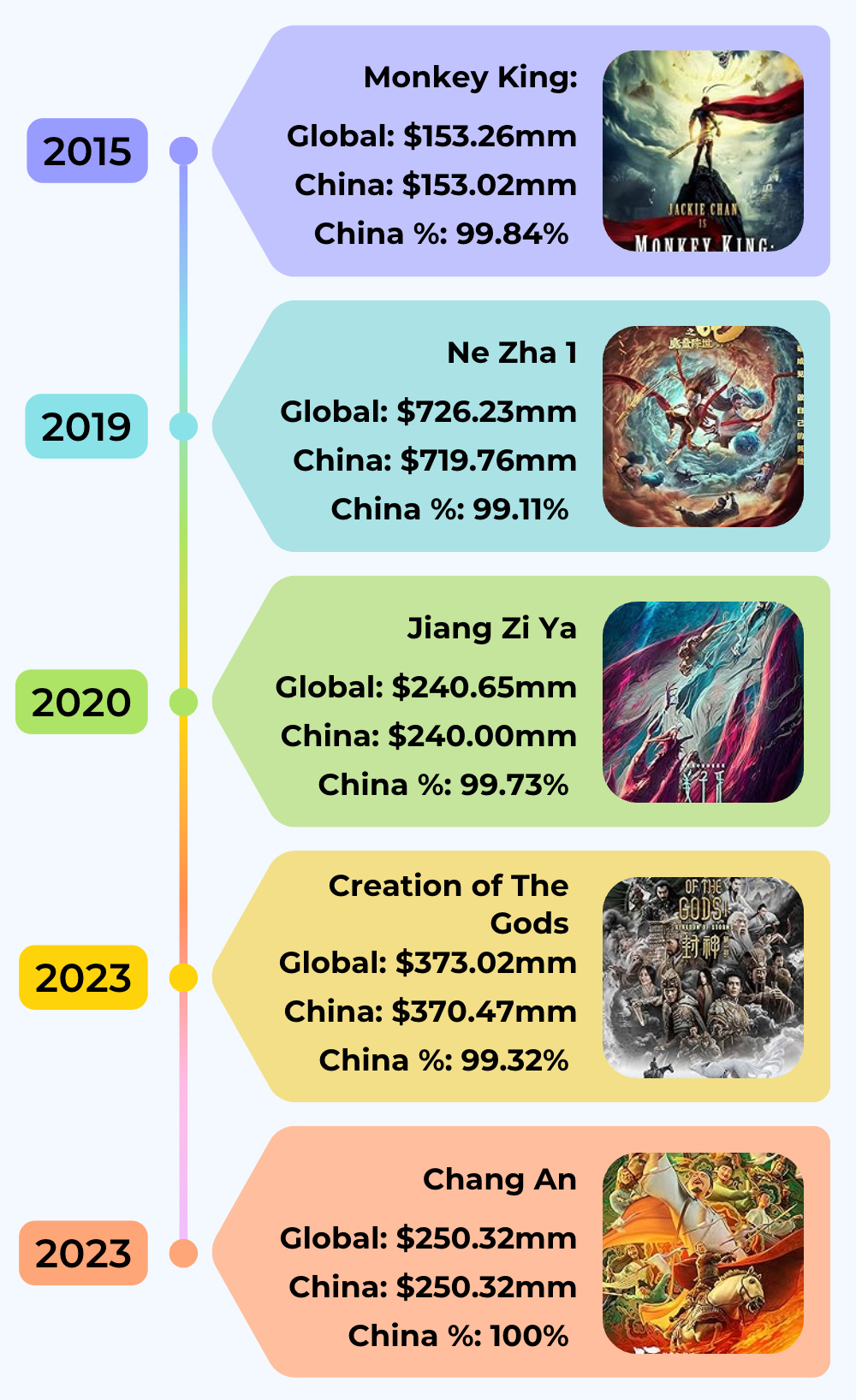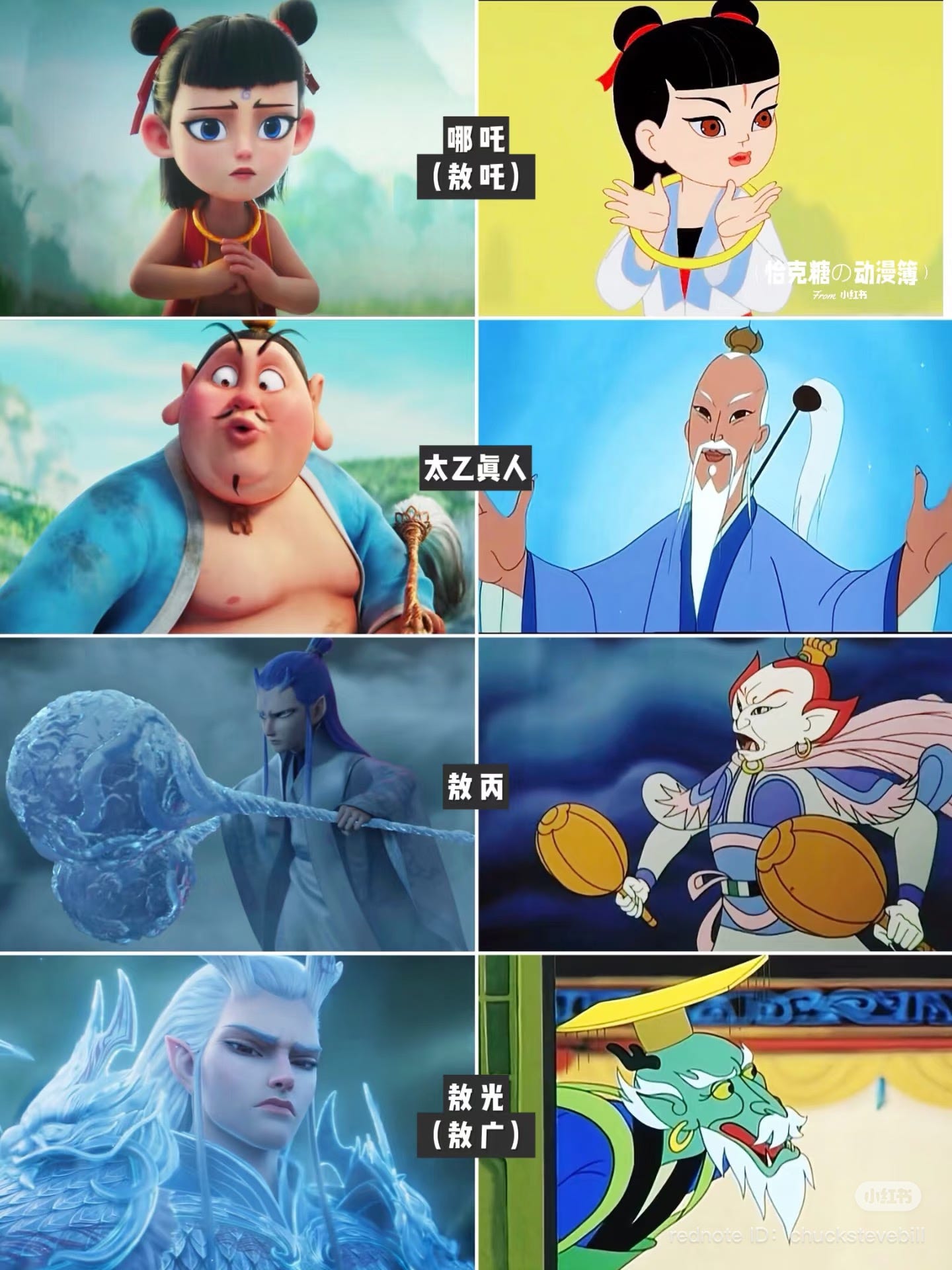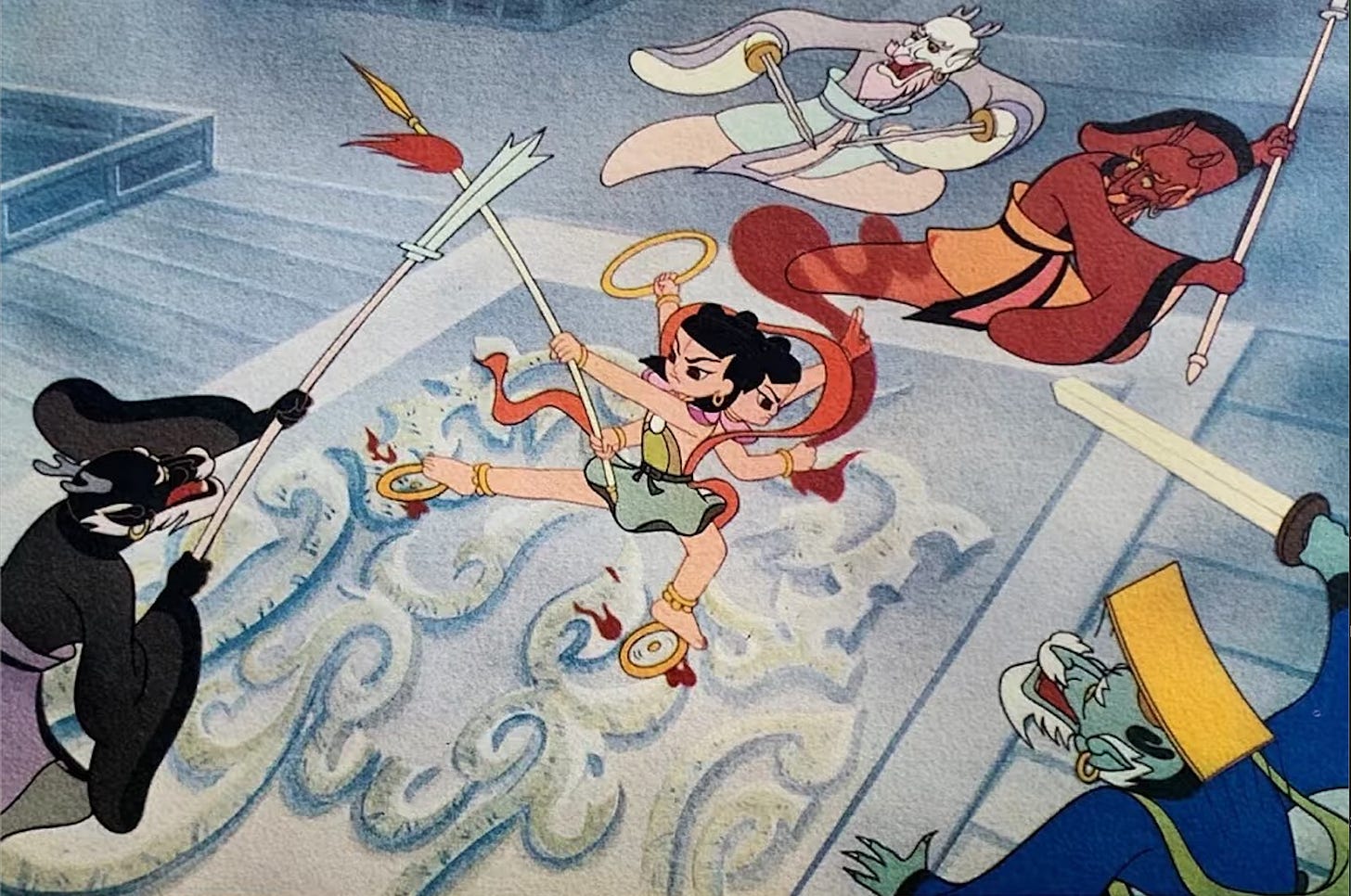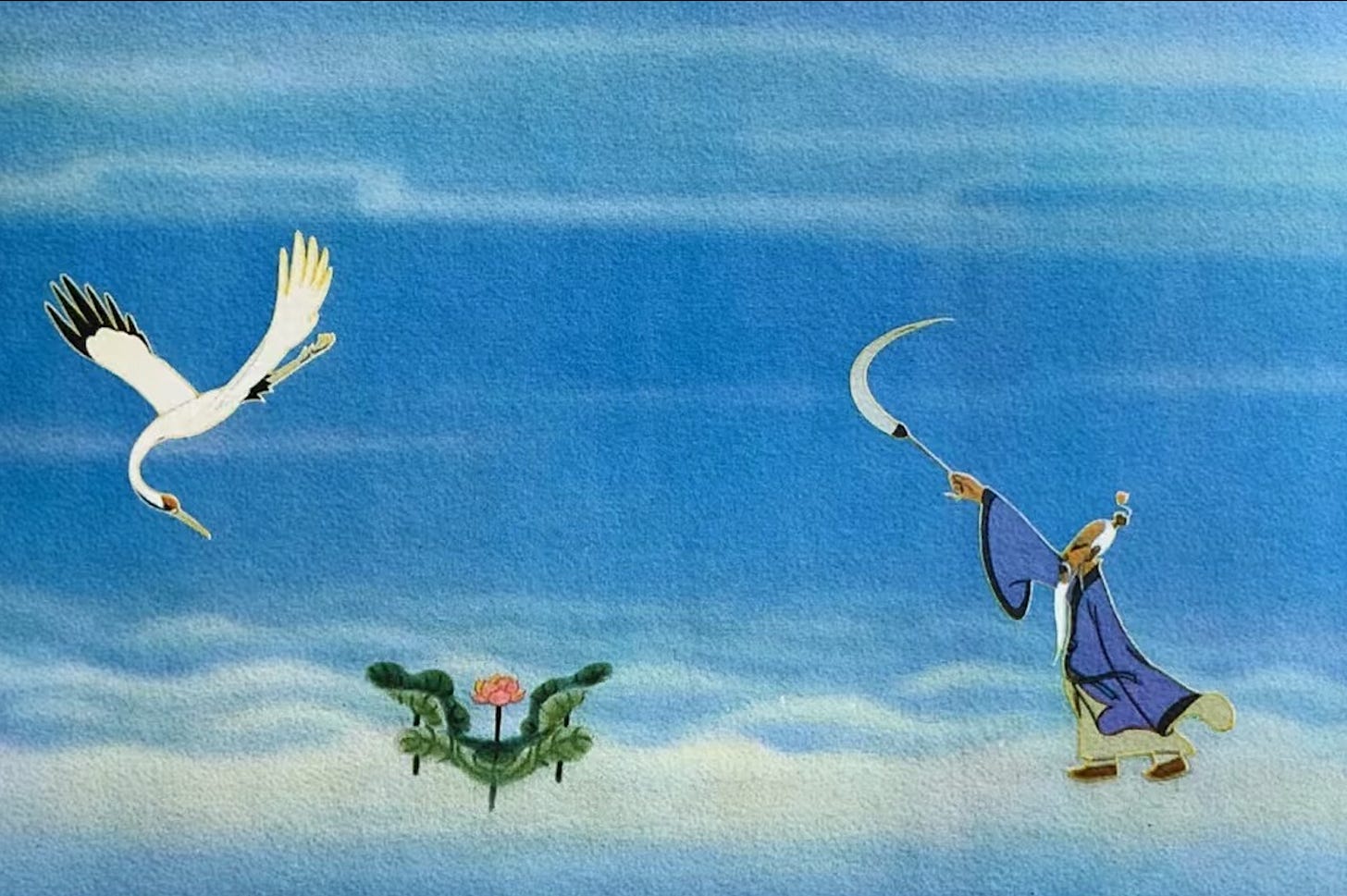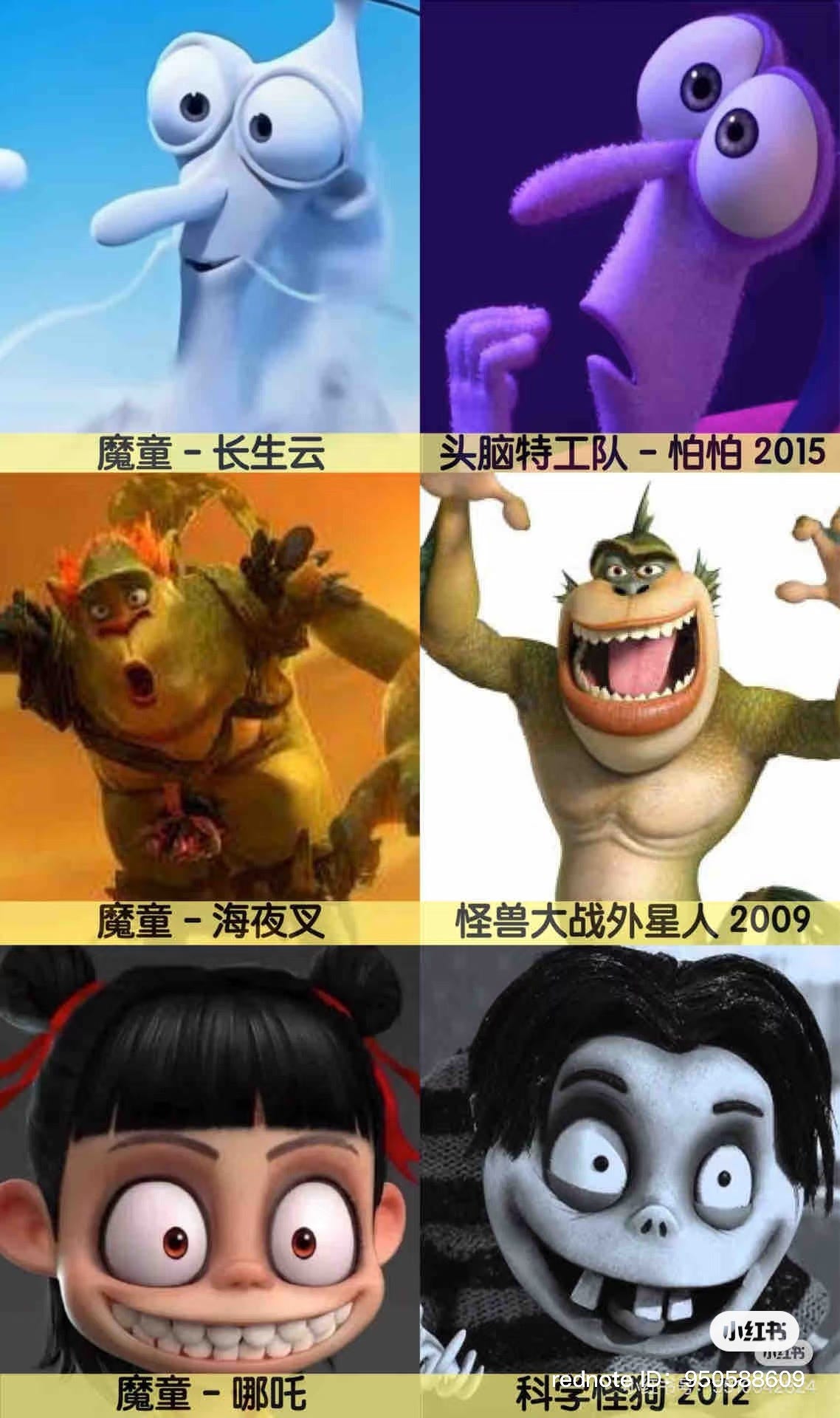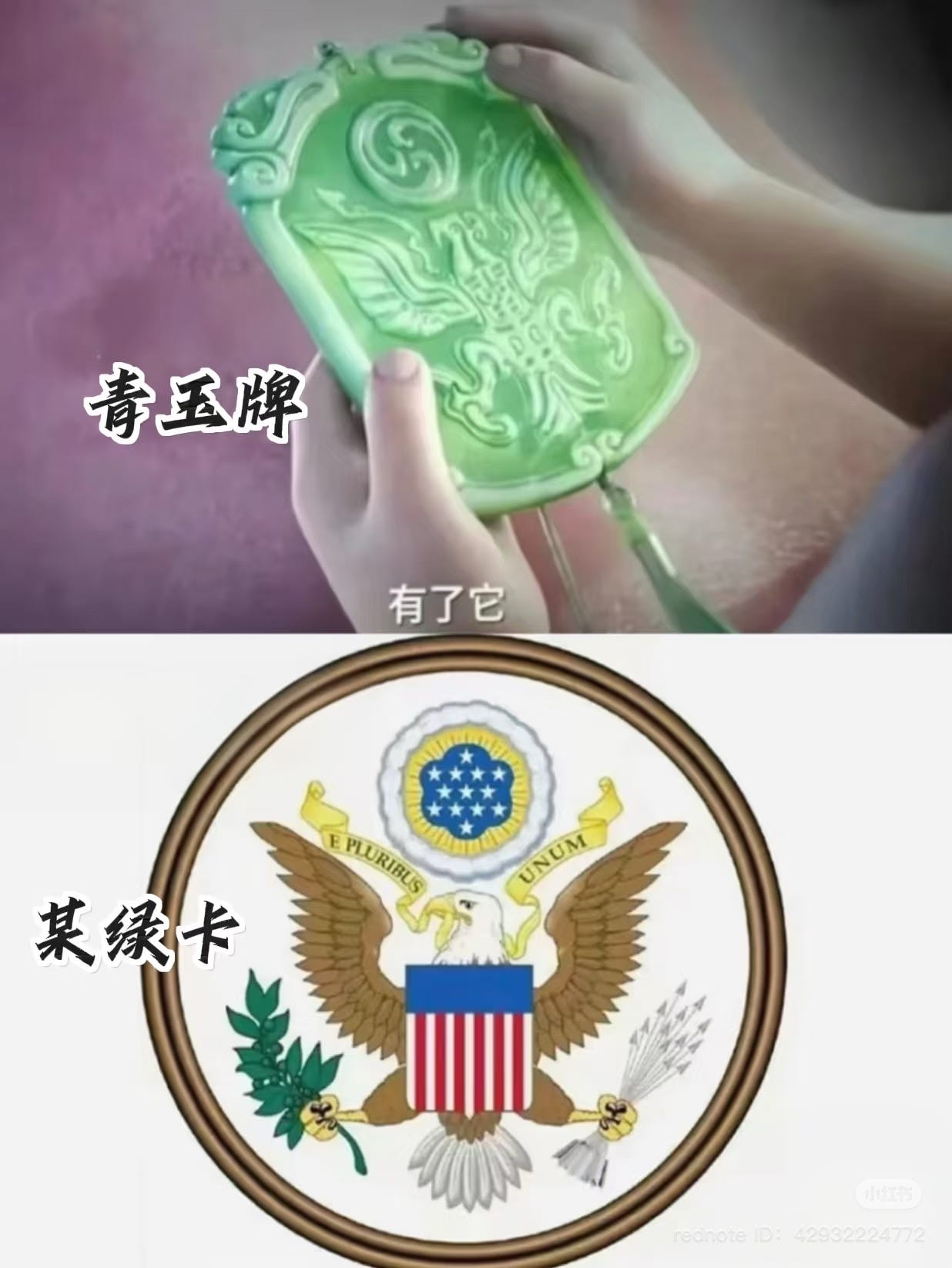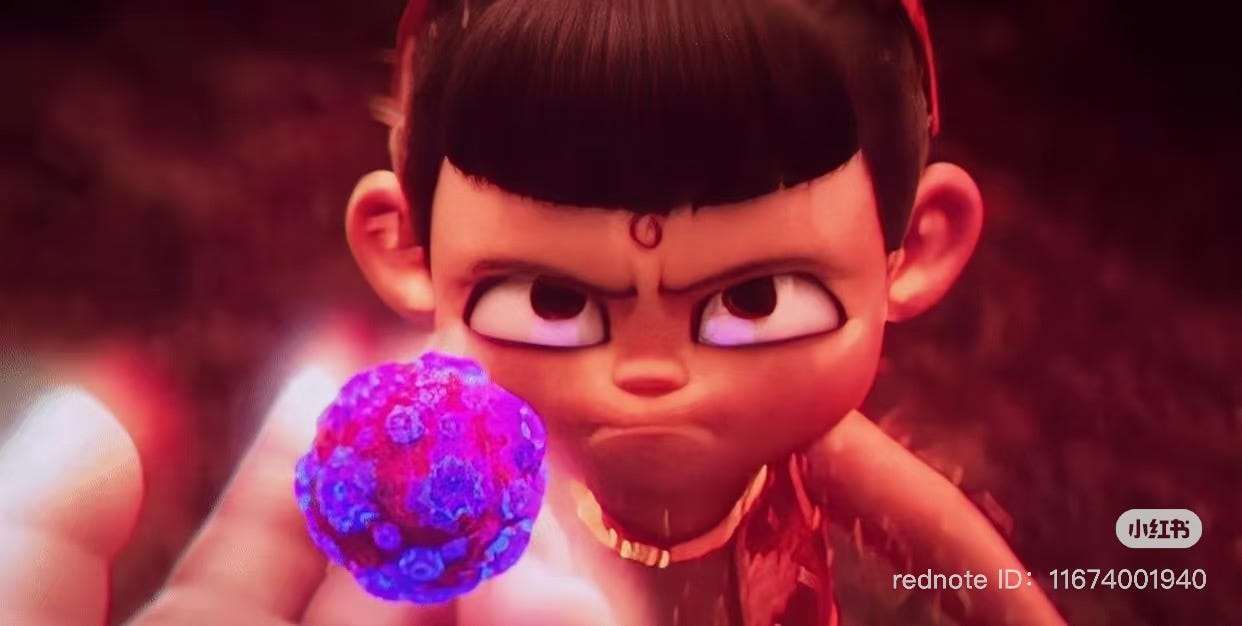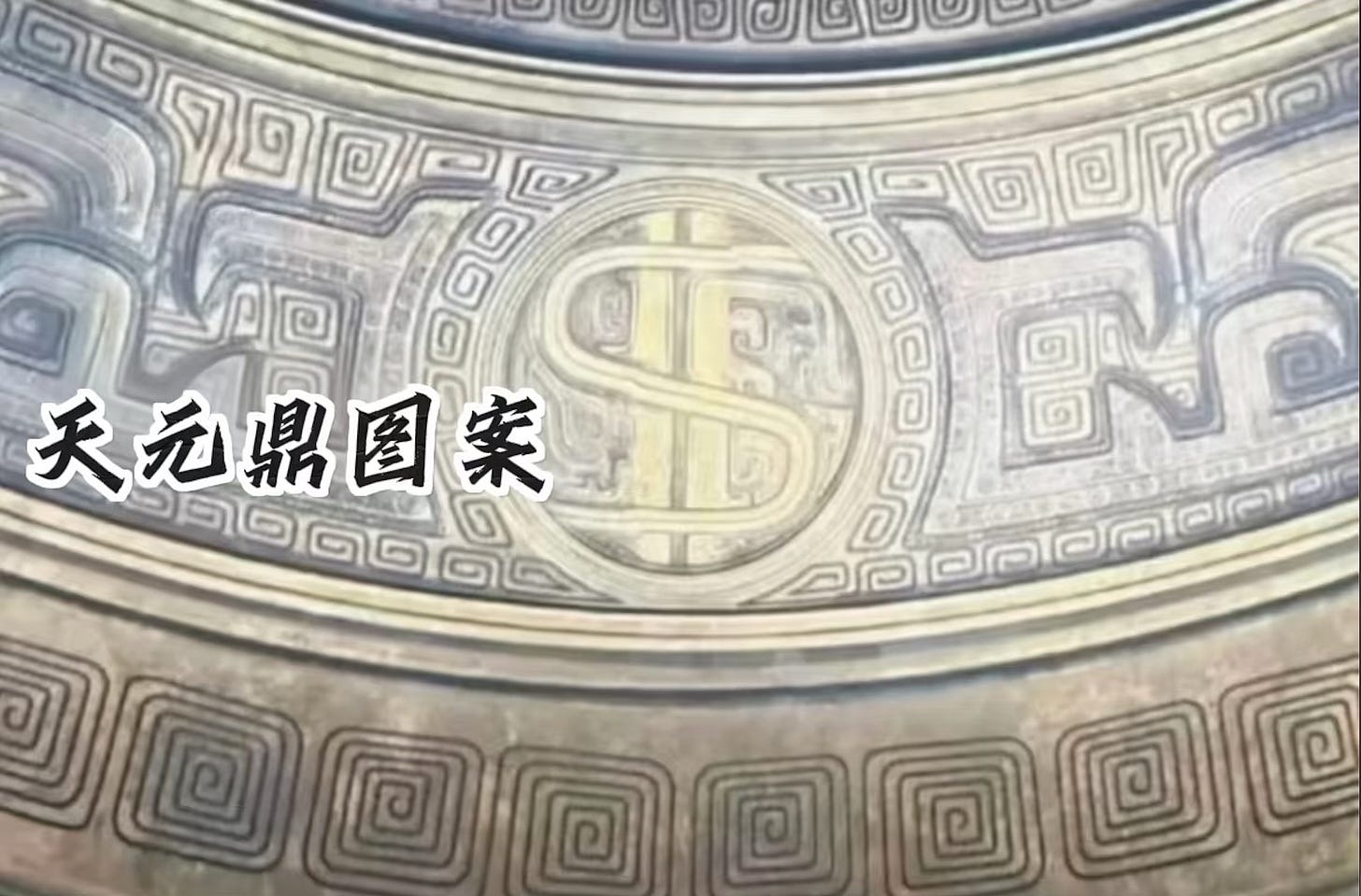A Tale of SUCKcess
Ne Zha 2 & the battle for cultural supremacy
Recently, Ne Zha 2, a Chinese animated fantasy film was released. The plot loosely follows the struggle between mankind, evil and the immortals based on Investiture of the Gods, a 16th century Chinese mythology novel. Since it’s release during the Chinese New Year, it has made multiple headlines and shattered global records. Out of curiosity, I finally had the chance to watch it last week, and
here’s the tale of its SUCKcess.
Back in 2023, the Chairman of Beijing Enlight Media, the company behind Ne Zha 2, said that “My greater hope is to see if it’s possible to drive China's box office into the $1 billion era, and I hope the film that hits the milestone is Ne Zha 2.”
Well, he’s way off — at the time of writing, the film has raked in close to $2 billions, surpassing Inside Out 2 as the highest grossing animated film in history and the 7th highest grossing film worldwide. It currently boasts a 8.2 rating on iMDb, 99% rotten tomatoes, and the stock price of the studio tripled in 7 days.
No doubt, this is a resounding, massive commercial success, but as you can guess from the title, this film sucks. In addition to that, if we zoom out a bit, there’s a much larger dynamic at play — the battle for cultural supremacy. So allow me to first take you to the 10,000 foot view, and then I’ll explain what are the implications of Ne Zha 2 within this broader context.
Hollywood, China, and Cultural Supremacy
Towards the end of Red Carpet: Hollywood, China, and the Global Battle for Cultural Supremacy, Schwartzel wrote
We are about to watch the final act in a classic tale. China started this century as the savvy ingénue, eager to learn. Countless Hollywood movies have taught us what happens next.
The ingénue grasps for the leading role.
Since early 2000s, in search for more growth, Hollywood has increasingly turned towards China for its massive population and insatiable need for entertainment. As a result, we saw movies like Transformers: the Age of Extinction that scored a franchise low in the U.S. but an all time high in China or Warcraft, which made $47 millions in the U.S. but $221 millions in China.
However, what stood out the most was the Kung Fu Panda series. It was an instant hit in China upon its release in 2008, but more importantly it was a wake up call to the Chinese filmmaking industry. The then President of the China National Peking Opera Company questioned
The film (Kung Fu Panda)’s protagonist is China’s national treasure and all the elements are Chinese. Why didn’t we make such a film?
The box office is not the only motivating factor here, as cinema is also an incredibly effective channel to broadcast a country’s soft power. For decades, the Chinese audience was enamored with the world portrayed by Hollywood films, and China has long wanted to do the same with its own treasure trove of stories.
Hence commenced the final act that Schwartzel predicted — the rise of Chinese films. The act was first kickstarted by a series of films that highlighted Chinese heroism in action/military/adventure films like
In the meantime, another movement started highlighting the traditional Chinese culture through adaptation of classic literature like
Fast track to today, the final act has hit new heights with the release of Ne Zha 2. As an avid fan of Chinese cinema, there would’ve nothing I’d like to see more than a Chinese film win big. However, despite Ne Zha 2’s earth-shattering success, despite the countless media coverage that brands this success as a win for China, I simply cannot be happy for it. In fact, I’m worried that this is setting the wrong kind of example, where the box office becomes the only North Star.
Since 2013, the Chinese government has published various memos on this topic, and the slogan is “让中国电影走出去”, meaning “let Chinese film walk onto the world stage.” Ne Zha 2 is not the answer despite having the illusion of being one. In order to really propel Chinese films onto the world stage, two criteria must be met
It needs to be an outstanding film
It needs to get at least 60% of its ticket sales from foreign market
Keen readers might have already noticed that the two timeline graphics in this section revealed something very interesting —
While Chinese films have scored major box office wins, the vast majority of the revenue came from the local China audience alone. 96% is the lowest number, that’s crazy localized!
Similarly, for Ne Zha 2, the ~$2 billions box office was hit with little help from the rest of the world, with only $30 millions from foreign markets. In other words, 98.4% of the ticket sales came from China alone, and this is exactly why Ne Zha 2 is not the right answer because a great film is a pan-human experience that could not possibly just be a localized hype.
While the hard numbers of foreign market share is hard to argue with, many will disagree with me calling Ne Zha 2 a SUCKcess, so allow me to elaborate.
Why it sucks
I’m not going to talk about super contextual elements because these are hard to explain in a blog, instead I will focus on aesthetics, which is the visual foundation of a movie. Like it or not, if the aesthetic sucks, you can’t possibly have a good movie.
The aesthetics of this film is as if Marvel and TikTok conceived a baby together.
This is not particularly surprising as ByteDance is indeed Ne Zha 2’s strategic content partner. It’s pretty much 2 and half hours of sensory overload on top of a predictable plot and cringey humors.
As a reminder, Ne Zha 2’s plot loosely follows Investiture of the Gods, a classic Chinese mythology novel. I’m not saying that humor is not allowed in this kind of work, but bad humor is unacceptable. For instance, at one point in the film, Ne Zha is sent to arrest a bunch of goblin groundhogs, and for whatever reason the director thinks a cross over with the popular Internet meme of screaming groundhog would be a good idea. Come on! Even this meme itself has ceased to be funny! Not to mention that given the deep mythology origin of Ne Zha, this would be the equivalent of having Poseidon fight SpongeBob in Nolan’s upcoming Odyssey. Absurdism can work when you lean into it, but not when the rest of the film is severed from that style.
In terms of aesthetics, you might think that it looks fine initially. However, if we compare Ne Zha 2 with NeZha Conquers the Dragon King (1979), the regression of artistic quality is obvious. I’m just gonna leave this here, in comparison Ne Zha 2 doesn’t look that much better than a League of Legend trailer.
Here are a couple more shots from the 1979 version just so you get the idea.
Not only the aesthetics is atrociously cheap, some of them look…well, let’s just say
extremely unoriginal
Sidebar — a funny conspiracy theory
How else might the battle for cultural supremacy manifest? Perhaps by throwing some shade! I saw a couple articles floating around the Chinese Internet about the symbolisms in Ne Zha 2. The conspiracy theory postulates that
Ne Zha, the protagonist = China,
The Immortals, the villain = the United States.
To back it up, the engraving on the jade badge that signifies the immortal status looks extremely similar to the Great Seal, so it represents the green card/permanent residency.
The poison that the Immortals tried to feed to Ne Zha represents the COVID virus that some people believe was incubated at U.S. labs in order to sabotage China.
The cauldron that the Immortals used for alchemy represents the Federal Reserve because of the dollar sign on on the cauldron.
The Final Final Act
Going back to the main course of discussion on why Ne Zha 2 is simply not it
This film sucks
This film has negligible international traction.
Where do we go from here?
If I have any say, it’s time that China learns from its earlier films such as Crouching Tiger, Hidden Dragon that won the hearts, mind and box office of the world. Ironically, Crouching Tiger, Hidden Dragon has not only held the record for the highest grossing Chinese films in the U.S. for 20+ years, but also only $1 million out of the $213 millions world wide ticket sales came from China, which is the exact opposite of what’s happening now.
So perhaps the better example would be Kung Fu Panda 2, which grossed $665 millions world wide, with $93 millions coming from China.
Now how does China get there?
The same way how Kung Fu Panda was made, with care and freedom.
These two things do not magically grow out of nowhere over night. If bad films are rewarded with recognition and success, then commercial filmmakers will be guided with that perverse incentive. Freedom takes even longer to cultivate, and probably the hardest challenge for Chinese films given the increasing tightening of lips in China. Till then, it will take a couple more SUCKcess for China to pop its own bubble, and hopefully the ensuing vacuum will recalibrate the Chinese film industry and finally “让中国电影走出去.”
Lastly, please subscribe to make me feel needed, thanks.



